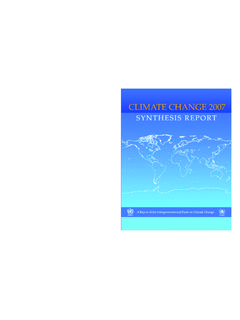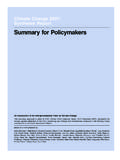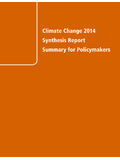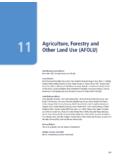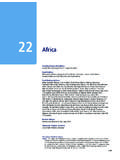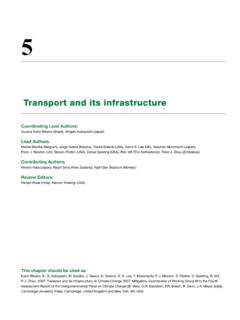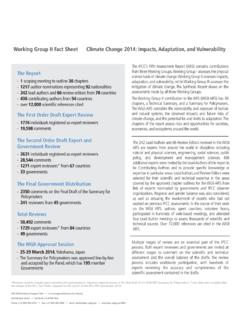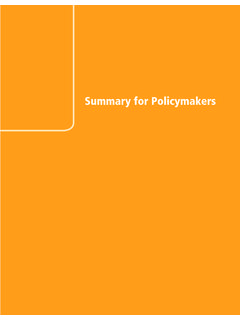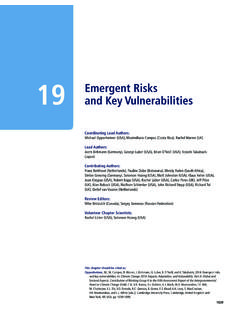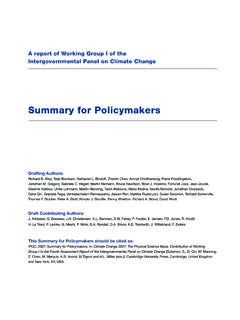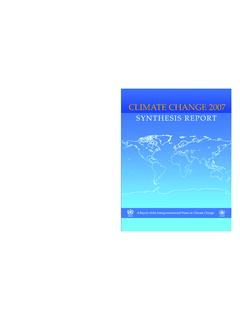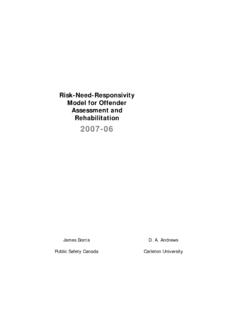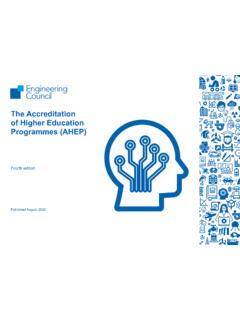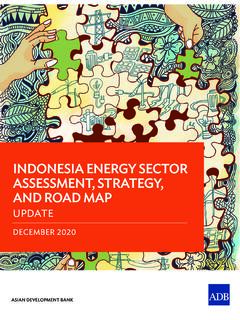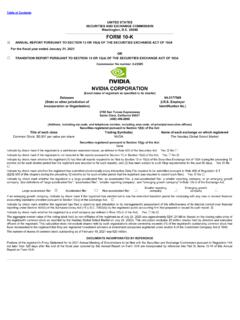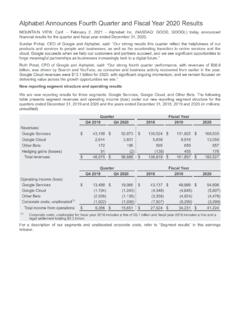Transcription of Changes in Atmospheric Constituents and in Radiative Forcing
1 2 Changes in Atmospheric Constituentsand in Radiative ForcingCoordinating Lead Authors:Piers Forster (UK), Venkatachalam Ramaswamy (USA)Lead Authors:Paulo Artaxo (Brazil), Terje Berntsen (Norway), Richard Betts (UK), David W. Fahey (USA), James Haywood (UK), Judith Lean (USA),David C. Lowe (New Zealand), Gunnar Myhre (Norway), John Nganga (Kenya), Ronald Prinn (USA, New Zealand),Graciela Raga (Mexico, Argentina), Michael Schulz (France, Germany), Robert Van Dorland (Netherlands) Contributing Authors:G. Bodeker (New Zealand), O. Boucher (UK, France), Collins (USA), Conway (USA), E. Dlugokencky (USA), Elkins (USA), D. Etheridge (Australia), P. Foukal (USA), P. Fraser (Australia), M. Geller (USA), F. Joos (Switzerland), Keeling (USA), R. Keeling (USA), S. Kinne (Germany), K. Lassey (New Zealand), U.
2 Lohmann (Switzerland), Manning (UK, New Zealand), S. Montzka (USA), D. Oram (UK), K. O Shaughnessy (New Zealand), S. Piper (USA), Plattner (Switzerland), M. Ponater (Germany), N. Ramankutty (USA, India), G. Reid (USA), D. Rind (USA), K. Rosenlof (USA), R. Sausen (Germany), D. Schwarzkopf (USA), Solanki (Germany, Switzerland), G. Stenchikov (USA), N. Stuber (UK, Germany), T. Takemura (Japan), C. Textor (France, Germany), R. Wang (USA), R. Weiss (USA), T. Whorf (USA)Review Editors:Teruyuki Nakajima (Japan), Veerabhadran Ramanathan (USA)This chapter should be cited as:Forster, P., V. Ramaswamy, P. Artaxo, T. Berntsen, R. Betts, Fahey, J. Haywood, J. Lean, Lowe, G. Myhre, J. Nganga, R. Prinn, G. Raga, M. Schulz and R. Van Dorland, 2007: Changes in Atmospheric Constituents and in Radiative Forcing .
3 In: Climate Change 2007: The Physical Science Basis. Contribution of Working Group I to the Fourth assessment report of the Intergovernmental Panel on Climate Change [Solomon, S., D. Qin, M. Manning, Z. Chen, M. Marquis, Averyt, and Miller (eds.)]. Cambridge University Press, Cambridge, United Kingdom and New York, NY, in Atmospheric Constituents and in Radiative Forcing Chapter 2 Table of ContentsExecutive Summary .. Introduction and Scope .. Concept of Radiative Forcing .. Chemically and Radiatively Important Gases .. Atmospheric Carbon Dioxide .. Atmospheric Methane .. Other Kyoto Protocol Montreal Protocol Gases .. Trends in the Hydroxyl Free Radical .. Ozone .. Stratospheric Water Vapour .. Observations of Long-Lived Greenhouse Gas Radiative Effects.
4 Aerosols .. Introduction and Summary of the Third assessment report .. Developments Related to Aerosol Observations .. Advances in Modelling the Aerosol Direct Effect .. Estimates of Aerosol Direct Radiative Forcing .. Aerosol Infl uence on Clouds (Cloud Albedo Effect) .. Anthropogenic Changes in Surface Albedo and the Surface Energy Budget .. Introduction .. Changes in Land Cover Since 1750 .. Radiative Forcing by Anthropogenic Surface Albedo Change: Land Use .. Radiative Forcing by Anthropogenic Surface Albedo Change: Black Carbon in Snow and Ice .. Other Effects of Anthropogenic Changes in Land Cover .. Tropospheric Water Vapour from Anthropogenic Sources.
5 Anthropogenic Heat Release .. Effects of Carbon Dioxide Changes on Climate via Plant Physiology: Physiological Forcing .. Contrails and Aircraft-Induced Cloudiness .. Introduction .. Radiative Forcing Estimates for Persistent Line-Shaped Contrails .. Radiative Forcing Estimates for Aviation-Induced Aviation Aerosols .. Natural Forcings .. Solar Variability .. Explosive Volcanic Activity .. Utility of Radiative Forcing .. Vertical Forcing Patterns and Surface Energy Balance Changes .. Spatial Patterns of Radiative Forcing .. Alternative Methods of Calculating Radiative Forcing .. Linearity of the Forcing -Response Relationship.
6 Effi cacy and Effective Radiative Forcing .. Effi cacy and the Forcing -Response Relationship .. Synthesis .. Uncertainties in Radiative Forcing .. Global Mean Radiative Forcing .. Global Mean Radiative Forcing by Emission Precursor .. Future Climate Impact of Current Emissions .. Time Evolution of Radiative Forcing and Surface Forcing .. Spatial Patterns of Radiative Forcing and Surface Forcing .. Global Warming Potentials and Other Metrics for Comparing Different Emissions .. Defi nition of an Emission Metric and the Global Warming Potential .. Direct Global Warming Potentials .. Indirect GWPs .. New Alternative Metrics for Assessing Emissions.
7 215 Frequently Asked QuestionFAQ : How Do Human Activities Contribute to Climate Change and How Do They Compare With Natural Infl uences? .. 135 References .. 217131 Chapter 2 Changes in Atmospheric Constituents and in Radiative ForcingExecutive SummaryRadiative Forcing (RF)1 is a concept used for quantitative comparisons of the strength of different human and natural agents in causing climate change. Climate model studies since the Working Group I Third assessment report (TAR; IPCC, 2001) give medium confi dence that the equilibrium global mean temperature response to a given RF is approximately the same (to within 25%) for most drivers of climate the fi rst time, the combined RF for all anthropogenic agents is derived. Estimates are also made for the fi rst time of the separate RF components associated with the emissions of each combined anthropogenic RF is estimated to be + [ , + ]2 W m 2, indicating that, since 1750, it is extremely likely3 that humans have exerted a substantial warming infl uence on climate.
8 This RF estimate is likely to be at least fi ve times greater than that due to solar irradiance Changes . For the period 1950 to 2005, it is exceptionally unlikely that the combined natural RF (solar irradiance plus volcanic aerosol) has had a warming infl uence comparable to that of the combined anthropogenic concentrations of the long-lived greenhouse gases (carbon dioxide (CO2), methane (CH4), nitrous oxide (N2O), halocarbons and sulphur hexafl uoride (SF6); hereinafter LLGHGs) have led to a combined RF of + [ ] W m 2. Their RF has a high level of scientifi c The 9% increase in this RF since the TAR is the result of concentration Changes since 1998. The global mean concentration of CO2 in 2005 was 379 ppm, leading to an RF of + [ ] W m 2.
9 Past emissions of fossil fuels and cement production have likely contributed about three-quarters of the current RF, with the remainder caused by land use Changes . For the 1995 to 2005 decade, the growth rate of CO2 in the atmosphere was ppm yr 1 and the CO2 RF increased by 20%: this is the largest change observed or inferred for any decade in at least the last 200 years. From 1999 to 2005, global emissions from fossil fuel and cement production increased at a rate of roughly 3% yr 1. The global mean concentration of CH4 in 2005 was 1,774 ppb, contributing an RF of + [ ] W m 2. Over the past two decades, CH4 growth rates in the atmosphere have generally decreased. The cause of this is not well understood. However, this decrease and the negligible long-term change in its main sink (the hydroxyl radical OH) imply that total CH4 emissions are not increasing.
10 The Montreal Protocol gases (chlorofl uorocarbons (CFCs), hydrochlorofl uorocarbons (HCFCs), and chlorocarbons) as a group contributed + [ ] W m 2 to the RF in 2005. Their RF peaked in 2003 and is now beginning to decline. Nitrous oxide continues to rise approximately linearly ( yr 1) and reached a concentration of 319 ppb in 2005, contributing an RF of + [ ] W m 2. Recent studies reinforce the large role of emissions from tropical regions in infl uencing the observed spatial concentration gradients. Concentrations of many of the fl uorine-containing Kyoto Protocol gases (hydrofl uorocarbons (HFCs), perfl uorocarbons, SF6) have increased by large factors (between and ) between 1998 and 2005. Their total RF in 2005 was + [ ] W m 2 and is rapidly increasing by roughly 10% yr 1.
